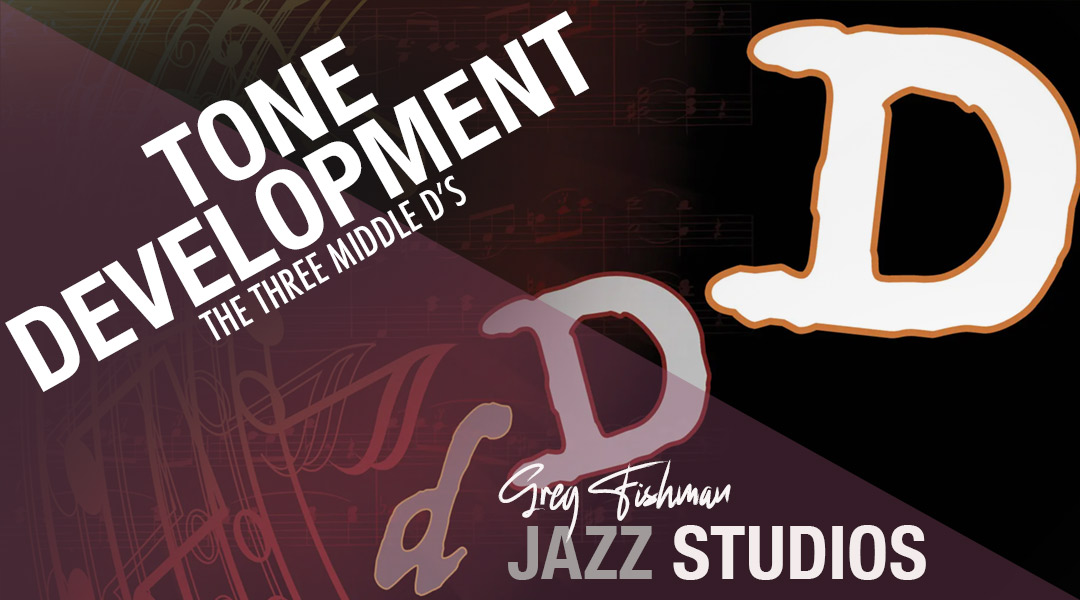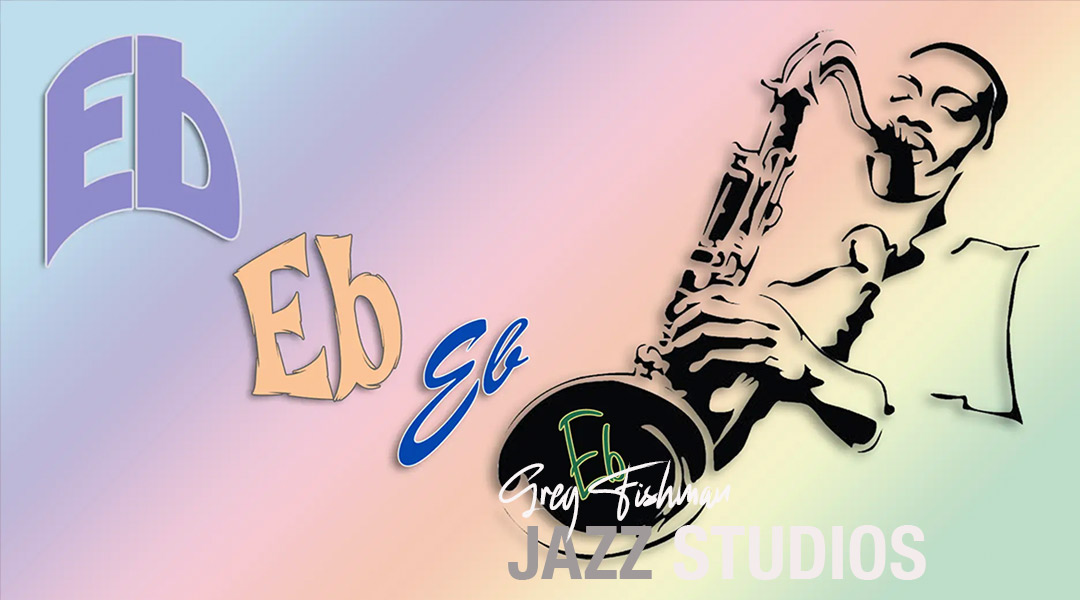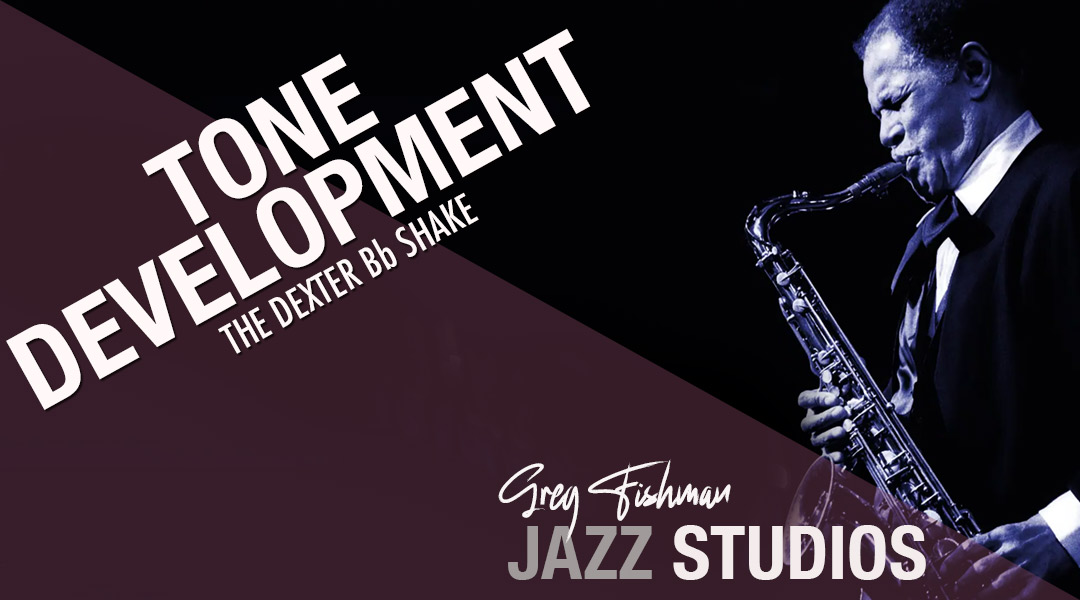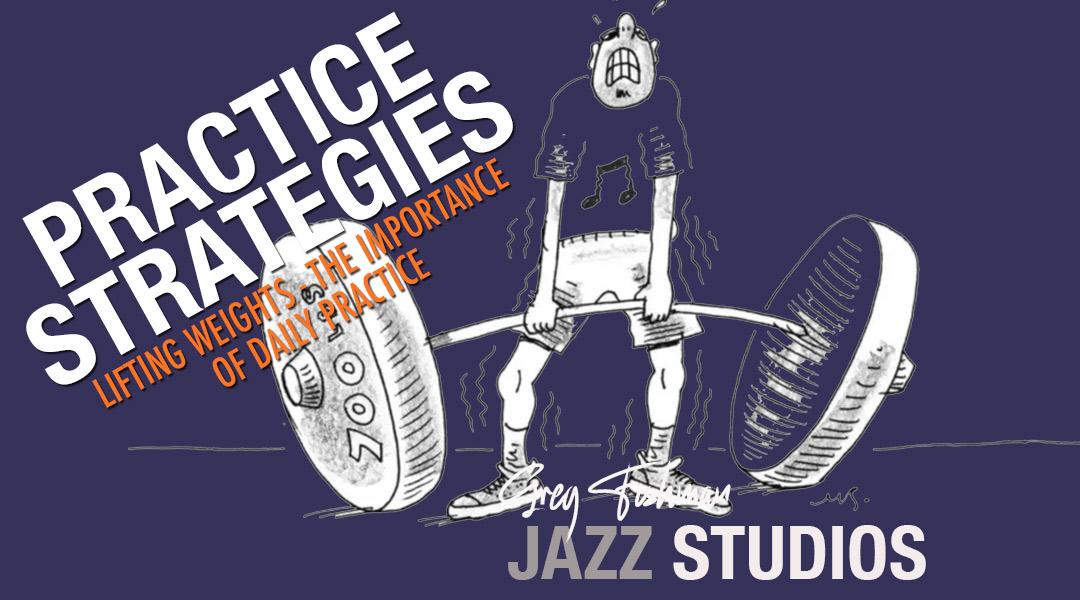Joe Henderson High D and Eb
Continuous Tone – Keeping the Air Moving
Continuous Tone – Keeping the Air Moving
The Donkey
The Donkey
Sunrise/Sunset Neck Exercise
Sunrise/Sunset Neck Exercise
The Three Middle D’s of the Saxophone
The Three Middle D’s of the Saxophone
The Four Middle Eb’s of the Saxophone
The Four Middle Eb’s of the Saxophone
Jazz Vibrato
Jazz Vibrato
How to get a full tone on the Palm Keys
How to get a full tone on the Palm Keys
The Dexter Bb Shake
S The Dexter Bb Shake
Lifting Weights – The Importance of Daily Practice
The Importance of Daily Practice
The “Dooden” Tongue
The “Dooden” Tongue
Joe Henderson High D and Eb False Fingerings
Joe Henderson High D and Eb
Continuous Tone – Keeping the Air Moving
Continuous Tone – Keeping the Air Moving
The Donkey
The Donkey
Sunrise/Sunset Neck Exercise
Sunrise/Sunset Neck Exercise
The Three Middle D’s of the Saxophone
The Three Middle D’s of the Saxophone
The Four Middle Eb’s of the Saxophone
The Four Middle Eb’s of the Saxophone
Jazz Vibrato
Jazz Vibrato
How to get a full tone on the Palm Keys
How to get a full tone on the Palm Keys
The Dexter Bb Shake
S The Dexter Bb Shake
Lifting Weights – The Importance of Daily Practice
The Importance of Daily Practice
The “Dooden” Tongue
The “Dooden” Tongue
Module 55
LESSON 1: Moving 5ths
In this video lesson, I share a concept that I call “Moving 5ths.” This is a great way to add some voice-leading to a static chord.
For example. with a tune like “I’ll Remember April,” a soloist has four measures of a major seventh chord, followed four measures of a minor seventh chord. With the “Moving 5ths” strategy, it’s very easy to create a melodic change of color by highlighting the moving 5ths in the chords.
Includes detailed PDF practice notes for Bb, Eb and C instruments.
LESSON 2: Joe Henderson High D and Eb False Fingerings
Back in the late 1980’s and early 1990’s, I was so fortunate to have studied with Joe Henderson. I’ve always been a fan of his music and his approach. I used to hear him play every time he’d visit Chicago.
In this video lesson, I share two fingerings that I learned from intensive listening and study. While much of Joe’s technique is technically challenging, these two fingerings are very manageable, and they provide a very cool change of texture for these two palm key notes. Be sure to have your horn out to follow along with me in this lesson!
LESSON 3: Exploring Hip Lick #51
In this video lesson, I’ll explore Hip Lick #51 from my book, “Hip Licks for Saxophone, Volume 1.”
This is a Bbmi7 lick (tenor key) that is primarily based an an arpeggio that utilizes what I call “Direction 3,” which is a descending arpeggio followed by an ascending arpeggio. The lick highlights one of my favorite harmonic choices for a minor chord — the 11th.
Includes the “Echo Game” (by ear) for the lick in 12 keys, as well as twelve new endings for the lick — a new ending for the lick in each new key.
LESSON 4: 3D Dynamics – Decoupling Finger Pressure from Dynamics
In this video lesson, I share a technique that I developed to improve my technique by decoupling finger pressure from the dynamics being played on the horn. In my 20’s, I was playing a quiet background gig and I noticed that I had nice, smooth technique on that gig. Lots of effortless facility on the horn.
The next night, I had a very different type of gig. Jazz gig in a noisy club with a loud drummer and no microphone. I found that my technical facility on the horn seemed to have dropped overnight! I was struggling with technical passages that were easy the night before.
There was tension in my hands and arms. After the gig, I thought about it and made a startling realization. When I was playing softly, I was relaxed, pressing the keys lightly. On the loud gig, I was tense and pounding the keys down very hard as I was struggling to hear myself.
I realized that I needed to be able to separate my finger pressure from my dynamics. For the benefit of a visual reminder — this is the 3D part — I hold my mouthpiece cap close and far away from the camera as I demonstrate the concept.
This lesson will improve both your technique and your attention to dynamics!
Module 54
LESSON 1: The Pivot
In this video lesson, I use Hip Lick #1 to demonstrate an essential device for creating many variations from a very small amount of musical material.
This device is commonly known as “The Pivot.” The pivot involves the use of octave displacement applied to one or more notes in a phrase. I call this concept “high mileage,” because you get so much more from each musical idea when you apply the pivot.
Sometimes the pivot is used to simply modify a phrase in order to make it fit within the range of an instrument. Other times, the pivot is used simply to the benefit of musical variety with the same group of notes in a phrase. Includes detailed PDF practice notes for Bb, Eb and C instruments.
LESSON 2: Neighboring Diatonic Seventh Chord/Scale System (Parts 1, 2, 3 and 4)
In this series of four video lessons, I share a new system that I have developed for the creation of scales. The system uses two neighboring diatonic seventh chords to create any mode of any scale.
In the first three videos, I demonstrate the system using the vibraphone, for both the visual presentation of the instrument, as well as the fact that I can let the notes ring into each other, providing a combined sound of all notes from both chords.
In part 4, I demonstrate the system on tenor saxophone.
This is a completely different approach to scale construction, and it’s fantastic for ear training, as it gives your ear an overview of the sound of the scale with the chord arpeggios.
In addition, I break down the system to groupings of four notes, six notes, and eight notes, which provides not only a graduated system for your ear to absorb the sounds but also gives you incredible fluency of technique.
Part 1: Overview and explanation of the system.
Part 2: How to practice with the system to create the major scale.
Part 3: Chord combination formulas for all modes of the major scale system.
Part 4: Demonstration of the system on tenor saxophone.
Includes detailed PDF practice notes for Bb, Eb and C instruments. Also includes PDF with chord formulas for both major and melodic minor modes.
LESSON 3: Continuous Tone – Keeping the Air Moving
In this video lesson, I share a strategy that has helped so many aspiring students struggling with playing their chords in a smooth way. Many students tend to stop blowing whenever they are unsure of the next note in a chord to play. When working with one of my skype students, this approach immediately made him sound smoother and more expressive.
Module 43
LESSON 1: The Donkey
In this video lesson, I share my system to develop a strong, consistent tone when changing from the upper register to the lower register. The video lesson focuses, especially on slurred descending octaves.
I explain a common problem of aspiring saxophonists dropping their jaw to get to the low register, which causes a pitch drop to the upper note, as well as a weak sounding lower register. I call this problem, “the donkey” because the sound reminds me of a braying donkey.
This is an essential lesson for tone development. Key elements in this lesson include a discussion of jaw positioning, throat tension, and air support. ESSENTIAL FOR ALL LEVELS.
LESSON 2: TUNES
In this video lesson, I share with you the basic bebop style blues changes that my famous Chicago teacher, Joe Daley showed be when I was studying with him in the 1980s. These are what I consider to be essential blues changes for bebop era blues heads, like Billie’s Bounce, Tenor Madness, Now’s the Time, etc.
There are many advanced options for the blues, but this video will provide you with the essentials to get started. I play the progression slowly, with the chords in all four directions. I also take you through singing the roots of the chords while playing the changes on the keyboard. Includes PDF with these changes for C, Bb, and Eb instruments. Intermediate level.
Includes detailed PDF practice notes for C, Bb, and Eb instruments.
LESSON 3: Mi(maj7) Chords with Echo Game in Four Directions
In this video lesson, I explain how to play minor(maj7) chords. This is one of my favorites. it has a kind of “film-noir” quality to the sound of the chord, with a dark minor third, a neutral perfect fifth, and a very bright major seventh. I often refer to this chord as the “Vertigo” chord because this sound was featured so prominently in Alfred Hitchcock’s classic film “Vertigo,” starring Jimmy Stewart.
This chord is also featured in songs such as: Harlem Nocturne, Nica’s Dream, Chelsea Bridge, Solar, and many more. I take you through the “echo game” in all four directions, with Direction 1 at 2:16, Direction 2 at 4:00, Direction 3 at 5:36, and Direction 4 at 7:10. Starting at 8:08 I have a high-speed echo game for advanced players. At 10:48 I give suggestions for practicing with this chord.
Includes PDF for C, Bb, and Eb instruments.
LESSON 4: Addition by Subtraction
In this video lesson, I share my thoughts on transforming your playing not by adding more and more layers to what you’re doing, but by subtracting things that are holding you back. This is a very powerful concept. Who would have thought you could sound so much better by simply subtracting a few things from your playing?
Module 02
Intervals are one of the most overlooked practice items. However, I consider them just as important as practicing scales and chords. In this video, I demonstrate my approach to practicing major 7th intervals by playing them in the cycle, both ascending and descending.
This lesson demonstrates my system for hearing the location of a specific note in a chord. If you can already play your chords from the 1-3-5-7 ascending and 7-5-3-1 descending, this video will take you to the next level. This system has helped many of students reach a deeper level of hearing harmony, to the point where they can play a “C” and hear that note clearly in their mind’s ear as the Root, 3rd, 5th or 7th of any chord type.
This is a common trick among pro players, temporarily transforming a maj7 chord into a dimMaj7 chord for added harmonic flavor.
In this lesson, I discuss and demonstrate Six Melodic Variations on a Descending Minor 7th Chord, and the theory behind them.
This lesson features a technique I call “Sunrise/Sunset” for improving your breath support and dynamics. I use the neck alone to produce a concert E, demonstrating some of the techniques I use to improve tone, dynamics, and breath control.
This lesson features a technique I call the “Butterfly Tongue.” The is a technique for slightly muting the note and changing the timbre while the tongue rests on the reed. Getz, Prez, and many of the old-school masters use this technique to achieve both ghosted 8th notes, as well as quickly repeated notes, similar in sound to double-tonguing, but much smoother. This is a challenging one, but well worth the effort!
In this lesson, I show you how to think of one note in four different locations within a major 7th chord. For example, C = Root of Cmaj7, but C = the 3rd of Abmaj7, C = the 5th of Fmaj7, and C = the 7th of Db maj7. The importance of enharmonic notes is also discussed in the video.
Module 05
Hip Lick #4 (from Hip Licks for Saxophone Volume 1) is analyzed from a melodic and harmonic standpoint. Includes exercises to improve your ear through the addition of chord arpeggios added to the lick. Also features a section on using the lick to improve your high-speed chops with a technique called the “Speed Bag.” Greg also demonstrates various ways of playing the lick in different keys, as well as placing the lick in songs. INTERMEDIATE & ADVANCED LEVEL.
One of the ways that the master players customize their sound is to use alternate fingerings, adding or subtracting weight to certain notes. This approach adds incredible detail to your lines. In this video, Greg demonstrates the three fingerings for middle D and also explains the musical reasons for choosing one fingering over another. PDF notes for this lesson include fingerings and written examples of the lines played in the video. INTERMEDIATE & ADVANCED LEVEL.
Greg gives a detailed analysis of “State Street” from Jazz Saxophone Etudes Volume 1. Includes tips on high speed playing, note groupings, chord substitution and moving sevenths. ADVANCED LEVEL.
Module 12
Two Great Approaches to Fluency in All Keys – In this video lesson, I’ll share a practice concept which has been great for the development of my playing fluently in all twelve keys. Many are familiar with what I call the “1 in 12 approach.” With this approach to practicing in twelve keys, you take one lick, pattern or song, and play it in 12 keys. However, the “12 in 1 approach” is the reverse…You take twelve different licks and put them all into just one key. This gives you a LOT of material under your fingers in one particular key, and it really improves your hearing in a particular key center. Both approaches are vital, but this 12 in 1 approach is new for most players. Give it a try! I’ve included PDF’s with the 12 in 1 approach for all keys for the first 12 licks of Hip Licks. However, do try them by ear for the best results! INTERMEDIATE & ADVANCED LEVEL.
In this video lesson, I’ll show you how to apply the diminished scale over the V7 chord in a ii-7/V7/Imaj7. This is a great video to watch if you’ve always wondered just how to implement the diminished scale in a moving phrase. First, I’ll play the idea diatonically, using just the notes of the major key. Next, I’ll explain and demonstrate, how to use the notes of the diminished scale in the phrase. In this video, I teach the lesson while playing the examples on the VIBRAPHONE. The vibraphone is great for this type of training, because it’s visual, making it easy to see what I’m doing as I give harmonic analysis. The vibes are also great for working on your saxophone intonation. When you play along with the vibes in the video, you can easily hear if you’re out of tune, because the sound of the vibes is such a pure tone. In addition, the vibes, allow you to hear multiple notes at once, which is great for hearing in harmonic context. PDF NOTES include transposed examples for all C, Bb and Eb instruments. INTERMEDIATE & ADVANCED LEVEL.
In this video lesson, I explore four different fingerings for middle Eb on the saxophone. The old-school players like Dexter, Stitt, Getz, Coltrane, Etc., liked to customize the timbre of their notes. Developing the ability to customize the weight and timbre of your notes will add a pro-level touch of detail to everything you play. If you’re not taking advantage of these four middle Eb options every time you play your horn, you’ve been missing out. Join in the fun with these cool sounds! INTERMEDIATE LEVEL.
In this video lesson, I’ll show you how to apply the major 7th interval to one of my favorite harmonic settings, using the notes of the interval as the 3rd and #9th on a dominant seventh chord. While this is not technically difficult to play, harmonically speaking, for some players, it will take the ear a little bit of time to get used to the sound. In the video, I demonstrate the sound several different ways, so that it’s easy for your ear to hear the interval in this new setting. I first heard Sonny Stitt use this sound when I was learning to play, and have used it ever since. This sound will add a very nice harmonic edge to your playing. INTERMEDIATE & ADVANCED LEVEL.
Greg shows how to keep your mind focused and sharp even when you’re away from the horn. This music theory game involves thinking of the note “B” as different degrees of major scales.
Module 15
In this video lesson, I share a concept that I developed after many years of studying the masters. I call it “Tape Measure Scales.” The idea is based on my observations that most people practice scales one octave (or more) in length, but I’ve noticed that this isn’t the way that the scales are actually used when improvising. Professional players can customize the length of any scale to fit any chord, even if the chord is only played for one or two beats. This system will teach you my approach in a step-by-step way, giving you amazing control of your scales. It will also improve your ear, your musical memory and sharpen your mental focus while playing. This is a core item in my own practice sessions. INTERMEDIATE & ADVANCED LEVEL
In this video, I demonstrate the three note tape measure scales. This is the first three notes of each major scale, played in the cycle. I play the three notes in four direcitons: 1. Up 2. Down 3. Up/Down 4. Down/Up. I also discuss and demonstrate practicing the scale slowly, for ear training, as well as a demonstration of playing the three note scale very quickly, for use as a technique workout. INTERMEDIATE & ADVANCED LEVEL.
In this video, I share my unique approach to teaching the jazz style vibrato. This is very different from a classical style vibrato. Many classical players favor a steady, contant speed when using vibrato. However, the jazz vibrato is usually variable in speed, and it often employs a decrescendo as it speeds up. I demonstrate how to practice separating the sound of the air from the sound of the note and then put all of the parts together, playing a couple of phrases of familiar melodies, using the vibrato. INTERMEDIATE AND ADVANCED LEVEL.
In this video, I’ll show you a way to clearly bring out the sound of a ii/V/I progression using just the notes of a descending major scale. This approach works because it takes key notes in the scale and aligns them so that the 3rds and 7ths of the chords are hit at just the right time. I also show how to add the bass notes in the low register of the horn, so that you can combine the root movement with the descending scale. Great for ear training, and also a very practical way to get more musical mileage out of your major scales. INTERMEDIATE LEVEL.
In this video, I share a view of my personal record collection. I discuss the importance of having a high quality stereo system, as well as the importance of being able to listen to an entire album in one sitting, with no distractions of web-surfing, texting or facebook. To me, listening to an album is like listening to a set of music at a jazz club. There will be many more future album recommendation videos, but the Nancy Wilson/Cannonball Adderley album would be at the top of any great player’s list of essential listening.
Module 25
In this video lesson, I’ll show you how to work with Hip Lick #8 from my book, Hip Licks for Saxophone, Volume 1.
In this video lesson, I demonstrate how I like to use the 4th of the scale or chord to create tension and then resolve the note to the 3rd or 5th. Many aspiring players have been told that the 4th is an “avoid note.” This is very bad advice because all players need to know how to deal with this note when it comes up. You can’t just ignore it or avoid it.
Many group members have written to me, asking for a video lesson teaching them how to get a big, powerful sound on their palm keys. In this video, I share my unique approach to getting a full, big tone on the palm keys.
If you’ve ever had trouble getting a nice sound on your palm keys, this video will be transformative. Includes PDF lesson notes. INTERMEDIATE LEVEL
In this video lesson, I share what I call the “Coltrane Triplets.” This is a way of practicing your chord arpeggios with triplets.
CLICK HERE to download PDF lesson materials
In this video, I discuss one of my all-time favorite albums, Dave Brubeck’s monumental 1959 recording, “Time Out,” featuring the great Paul Desmond on alto.
Module 30
In this video lesson, I demonstrate the concept of melodic embellishment, using my composition “Milwaukee Avenue” from “Jazz Phrasing for Saxophone, Volume 1.”
In this video lesson, I show you what I call the “Dexter Bb Shake.” I named it for Dexter Gordon because I first noticed the way that he used the effect.
In this video, I demonstrate an intense style of articulation that I learned from listening to one of my favorite players, the great Sonny Rollins. Sonny has an incredible amount of energy and power in his playing, and he’s developed an incredibly percussive style of articulation which introduces short notes in the middle of fast-moving eighth-note lines.
In this video, I discuss one of my favorite Sonny Rollins albums, “Sonny Rollins Plus 4.” This is on the Prestige record label, recorded in 1956.
Module 27
In this video lesson, you’ll observe me working with my Skype student Ritchie Graham (in Scotland). Over the years, many students have struggled with this double-time passage that I composed for my etude “Ravenswood Avenue.”
LESSON 2: Confirmation Changes / Hyde Park Blvd w/Aebersold
In this video lesson, I’ll show you how to nail the changes on Confirmation through good voice-leading, demonstrated in my contrafact for Confirmation, titled “Hyde Park Boulevard.”
In this video, I read the first chapter of my book, “The Lobster Theory.” This chapter is called “Lifting Weights,” and it’s about the importance of practicing each day.
In this video lesson, I’ll show you a very cool Sonny Stitt triplet pattern that works great over a ii mi7 / V7 progression.
In this video, I discuss one of my all-time favorite albums, guitarist Wes Montgomery’s 1966 Verve album, “Tequila.”
Module 34
LESSON 1: Four Directions – Thinking Locally and Globally
I often mention practicing in four directions for gaining mastery over your scales, chords and intervals. In this video lesson, I explore and explain the four directions. I describe the difference between thinking “locally” and “globally” when playing a sequential pattern.
LESSON 2: Finding the hidden Diminished and Augmented Chords in the Chromatic Scale
In this video lesson, I show you how to use the chromatic scale to diminished chords and augmented chords. Although I demonstrate these same chords in different video lessons (playing all of them on piano), this is an alternative approach, designed to help players that find it a real challenge learning the traditional way.
LESSON 3: Exploring Hip Lick #37
In this video lesson, I work with lick #37 from the book “Hip Licks for Saxophone Volume 1.” This is a two-measure C7 lick that uses part of the bebop scale, contrary motion, sequence and a diatonic enclosure.
In this video lesson, I share my technique for this popular special effect tonguing used by Getz, Bird, Pres and many of the top players from the Swing/Bop era. This one is intentionally an “all-ear” lesson, so there are no practice notes on this one.
LESSON 5: Listening Recommendation: Clifford Brown • Max Roach
This amazing 1958 album has so many classics…Daahoud, Joy Spring, Jordu, Parisian Thoroughfare…all on the same album. The beauty and symmetry of Clifford’s playing throughout this album is breathtaking.











